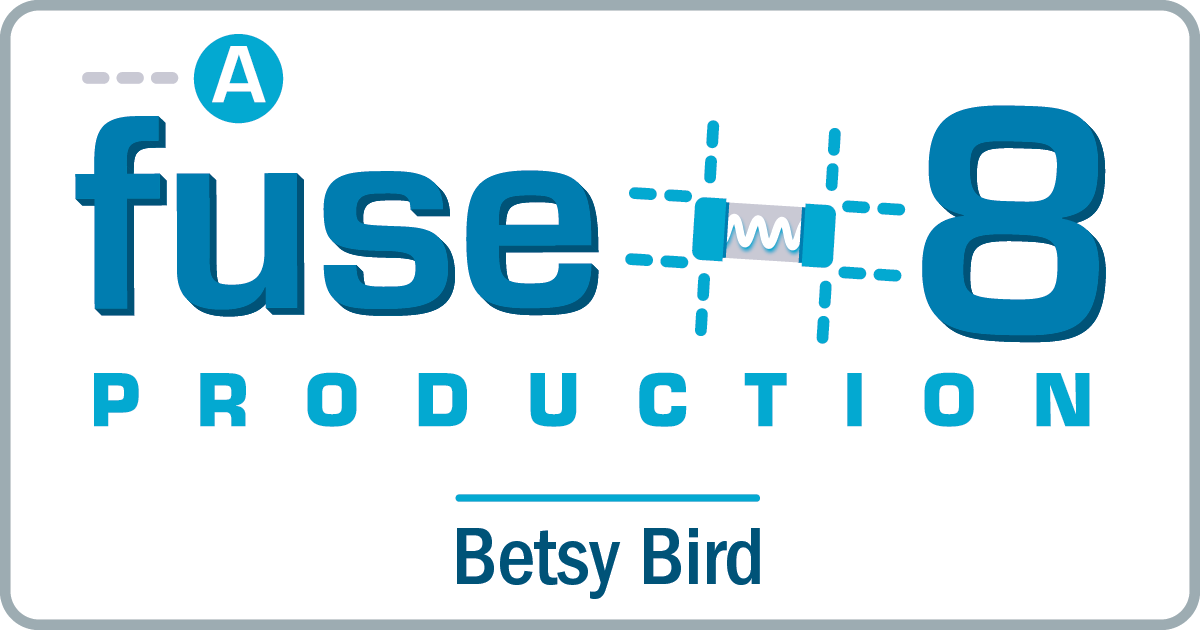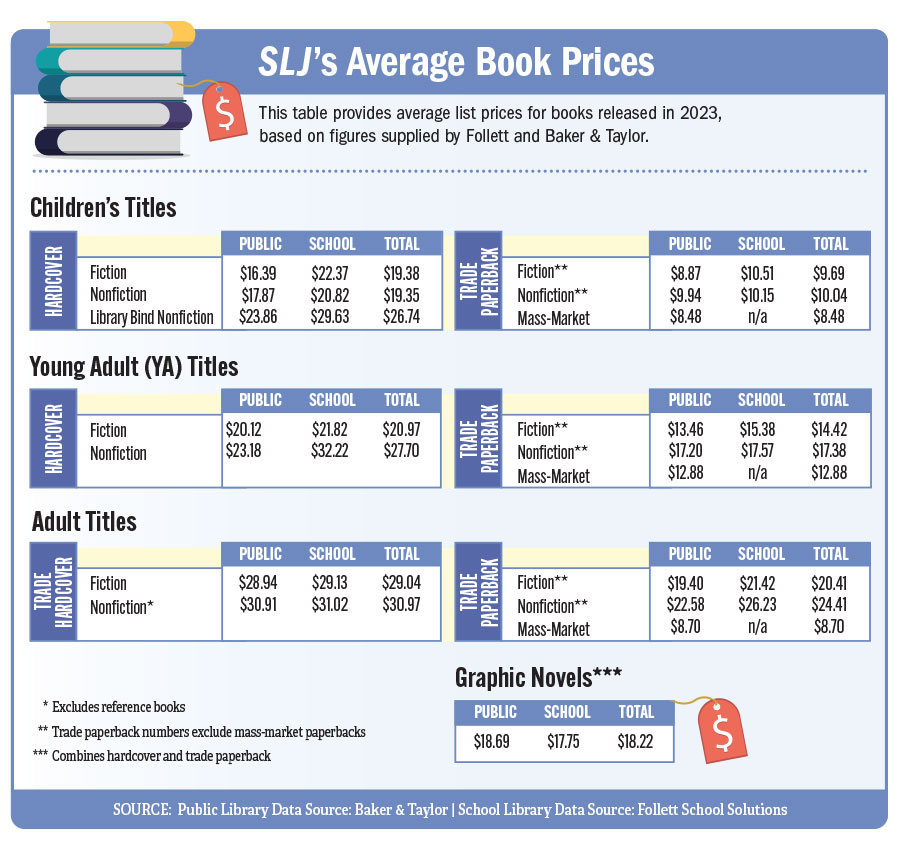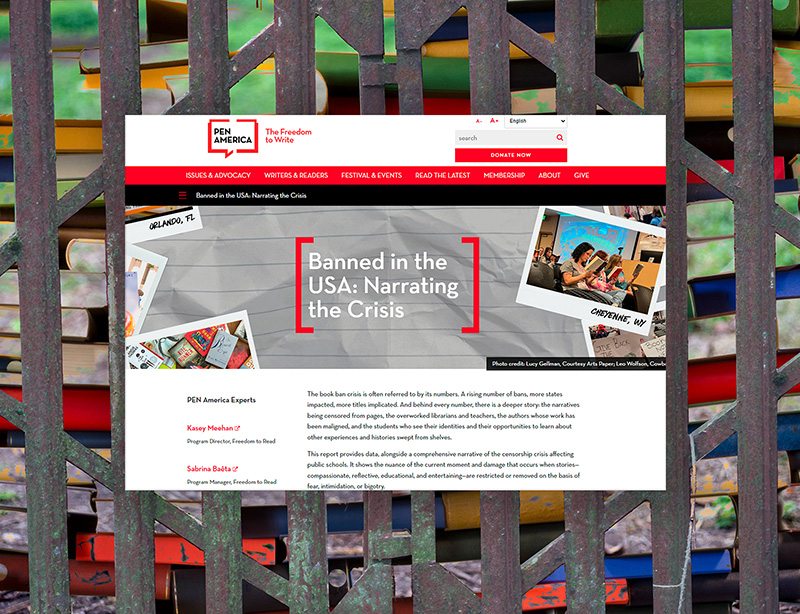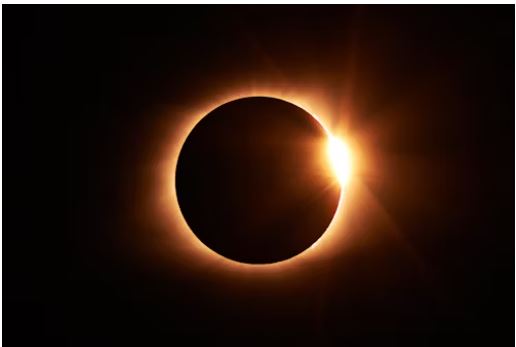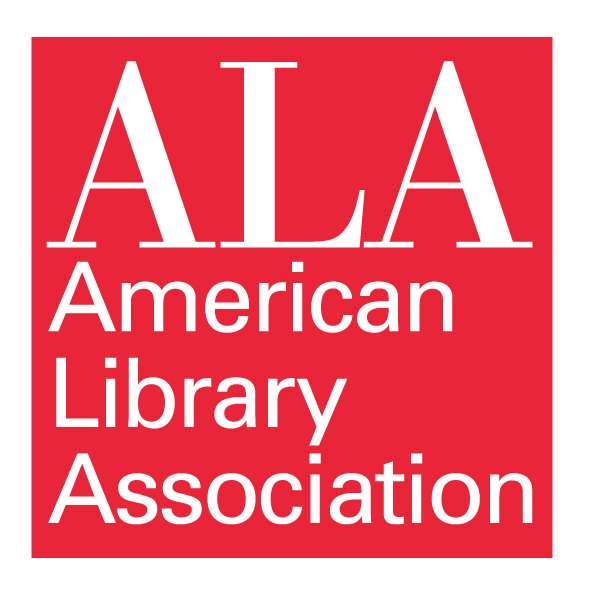Review of the Day: My Hair Is a Garden by Cozbi A. Cabrera
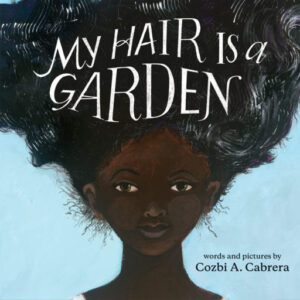 My Hair Is a Garden
My Hair Is a Garden
By Cozbi A. Cabrera
Albert Whitman & Co.
$16.99
ISBN: 978-0-8075-0923-4
Ages 4-7
On shelves now
It is very limiting to get your supplemental education solely through children’s books when you’re an adult. Continuing education, in whatever form it takes, should be pursued through a variety of sources. Yet for many of us in the children’s literature industry, your reading time might be relegated to books for kids due to your work. In many ways, this is fine. I’ve probably learned more about obscure historical figures, poetic forms, stars, hyenas, math, and grammar through books for kids than in all my years of elementary school. Children’s books are vaster and more impressive than they have ever been before, and you could be fooled into believing that they’ve left no (age-appropriate) stone unturned, and no subject left unexplored. It is only when I encounter a book like My Hair Is a Garden that I recall how little I actually know about the world outside of my own, small, and (let’s face it) white existence. People sometimes ask me where the gaps lie in the children’s book publishing industry. The real answer is that sometimes you can’t see the gap until someone comes along and fills it. Cozbi Cabrera’s latest does precisely that.
When she was little, MacKenzie would run pell-mell for Miss Tillie’s house, the lush little tidy house across the street its the green gardens. Today, MacKenzie runs there again, but not for the same reasons. For years she’s been teased about her hair, but today was the worst day. Julio Roberts stated in front of everyone, like it was an indisputable fact, that, “We all know that Mack’s hair is always a mess.” She doesn’t know what to do, but she knows she can’t rely on her mom to solve this problem. Miss Tillie hears her out then tells it to her straight. “It’s the health of your hair that counts”. Skeptical, MacKenzie listens as Miss Tillie tells the story of her own garden. How parts began as just cuttings. How some plants were trampled and had to be tended before they grew strong. Slowly but surely MacKenzie realizes what is being said. To tend hair, first you must make it strong. “My hair is a garden, and I give it love.” Hair care instructions and recipes for hair products appear at the end of the book.
ADVERTISEMENT
ADVERTISEMENT
If we conduct a quick survey of picture books published by large American publishing companies about black girls’ hair, what do we find? A list of books that have been considered positive or contentious, depending on the context. In 1997 there was Carolivia Herron’s Nappy Hair. It came to public notice in 1998 when parents in a Brooklyn school took offense at a white teacher’s use of the book. 1998 also saw the release of Natasha Tarpley’s I Love My Hair with its focus on the different ways to style black hair. Then 1999 saw the publication of Happy to Be Nappy by bell hooks, viewed by some as a response to the Nappy Hair controversy. Interestingly I was unable to find many hair-positive picture book titles prior to these three books, and after the 90s there was a very long lull. With the Newbery and Caldecott Honors awarded to the picture book Crown: An Ode to a Fresh Cut by Derrick Barnes (which celebrates the hair and style and strut of black boys) things are changing again. Now in 2018 we’re seeing three picture books, at least, that make the hair of black girls the focus. There’s Natalie’s Hair Was Wild by Laura Freeman (SLJ said of it, “the basic premise of a black girl’s hair infested with animals, combined with the history of discrimination against black hair creates too many problems for this title to rise above”) and Don’t Touch My Hair by Sharee Miller (not forgetting her previous book Princess Hair), which pairs very nicely with the poetry picture book Can I Touch Your Hair? by Irene Latham and Charles Waters (which is about a boy but speaks to a problem beyond gender). And none of these books, not a single one, talks about actual hair care for girls. Think about that. All these books about black girls and their hair and nothing about health or care.
 A look at these books listed and you immediately detect the patterns. In the 90s self-empowerment and pride in hair were the most important topics. In 2018, it gets a little more complicated. Pride is good but there are a lot more factors to take into consideration. Miller and Latham/Waters’ books allude to the form of self-empowerment that stands up to a society that reduces a person’s physical attributes to something you can pet like a dog. And Cabrera’s book? As I was reading it, I thought I knew what I was dealing with and it was a real shock to discover how wrong I was. At the beginning of the book MacKenzie recounts the many moments in her life when she has been teased for her hair. She then makes a conscious choice and runs to a neighbor and not her mother. Why? “Miss Tillie knew if I was looking for comfort, I could go to Mama for that.” That kind of comfort would be found in all those 1990s books on black hair that have been in print for years. Instead, she goes to Miss Tillie for solutions. So when Miss Tillie does not offer a string of supportive words about pride in black hair, I was surprised. Instead, she talks about “training” the hair. Not “training” in the sense of straightening or anything like that. She’s talking about taking care of your body and your hair like it’s a garden that should be tended with nutrients and self-care. Hair that’s “straggly, fragile, and full of split ends” is the thing to be avoided here. Cabrera isn’t downplaying the importance of pride in your hair, but she’s also acknowledging that if you ignore it entirely then there’s a price to pay. Not all black hair is the same, and you should know how to keep it healthy. How you choose to style it is your own business.
A look at these books listed and you immediately detect the patterns. In the 90s self-empowerment and pride in hair were the most important topics. In 2018, it gets a little more complicated. Pride is good but there are a lot more factors to take into consideration. Miller and Latham/Waters’ books allude to the form of self-empowerment that stands up to a society that reduces a person’s physical attributes to something you can pet like a dog. And Cabrera’s book? As I was reading it, I thought I knew what I was dealing with and it was a real shock to discover how wrong I was. At the beginning of the book MacKenzie recounts the many moments in her life when she has been teased for her hair. She then makes a conscious choice and runs to a neighbor and not her mother. Why? “Miss Tillie knew if I was looking for comfort, I could go to Mama for that.” That kind of comfort would be found in all those 1990s books on black hair that have been in print for years. Instead, she goes to Miss Tillie for solutions. So when Miss Tillie does not offer a string of supportive words about pride in black hair, I was surprised. Instead, she talks about “training” the hair. Not “training” in the sense of straightening or anything like that. She’s talking about taking care of your body and your hair like it’s a garden that should be tended with nutrients and self-care. Hair that’s “straggly, fragile, and full of split ends” is the thing to be avoided here. Cabrera isn’t downplaying the importance of pride in your hair, but she’s also acknowledging that if you ignore it entirely then there’s a price to pay. Not all black hair is the same, and you should know how to keep it healthy. How you choose to style it is your own business.
There’s writing and then there’s language. You might have written a story, but what language did you use when you did so? I like Ms. Cabrera’s story and how it equates hair care with gardening, but what really struck my fancy was her language choices. Right on the first page we learn that when it comes to Miss Tillie, “You could say her house had a glory.” Tears come in, “a slow leak, a salty streak”. And when MacKenzie is offered short healthy hair or long unhealthy locks she thinks, “Were those my only choices? These questions were drowning out the song in my head.” I love that. “..the song in my head.” Ms. Cabrera is no newbie to the world of picture books, having already illustrated such titles as Beauty, Her Basket, Most Loved in All the World, and Stitchin’ and Pullin’, amongst many others, but this is the first time I recall reading her words rather than just looking at her art. It’s lovely art, but we’ve been missing out, not hearing her words until now.
 Ms. Cabrera is an artist in the fullest sense of the term. When not creating picture books she creates clothing, quilts, dolls, and more. Without an official art degree myself I often turn to other reviewers to see what terms they’ve conjured up when describing her work. To them she draws in a “folk-art style”. Her colors are “vibrant”, “evocative”, they “add immediacy” to the text, and have “pop and personality”. All very nice words but they don’t really describe what the artist’s style does for me. People tend to use the term “folk-art” when they’re at a loss to put into proper terms how the acrylic paints on the page manage to both flatten the images and bring them miraculously to life. Look at the image of MacKenzie when Miss Tillie says she’ll show her how to shampoo her hair. The crossed arms, raised eyebrow, and jutted chin that spells out her skepticism and suspicion far better than any text could. This style of acrylic art isn’t always to everyone’s taste but like fellow illustrators Frank Morrison or R. Gregory Christie it brings a spark to the telling you wouldn’t find under anyone else’s brush. No garden would be a lush as Ms. Cabrera’s here. MacKenzie may be given something from the garden “I couldn’t see,” but we the readers are being given something that could only come through that lush, green sight.
Ms. Cabrera is an artist in the fullest sense of the term. When not creating picture books she creates clothing, quilts, dolls, and more. Without an official art degree myself I often turn to other reviewers to see what terms they’ve conjured up when describing her work. To them she draws in a “folk-art style”. Her colors are “vibrant”, “evocative”, they “add immediacy” to the text, and have “pop and personality”. All very nice words but they don’t really describe what the artist’s style does for me. People tend to use the term “folk-art” when they’re at a loss to put into proper terms how the acrylic paints on the page manage to both flatten the images and bring them miraculously to life. Look at the image of MacKenzie when Miss Tillie says she’ll show her how to shampoo her hair. The crossed arms, raised eyebrow, and jutted chin that spells out her skepticism and suspicion far better than any text could. This style of acrylic art isn’t always to everyone’s taste but like fellow illustrators Frank Morrison or R. Gregory Christie it brings a spark to the telling you wouldn’t find under anyone else’s brush. No garden would be a lush as Ms. Cabrera’s here. MacKenzie may be given something from the garden “I couldn’t see,” but we the readers are being given something that could only come through that lush, green sight.
While I’m quite fond of the art in this book, the design leaves something to be desired. In many ways the book falls prey to the problems you’ll find in a lot of self-published picture books (which this isn’t). At least at first, large blocks of text will pop up on pages, or parts of pages, separate from the art. This is not the case for the whole book, mind you. I many cases I liked how the words and the art were wed together. It is unfortunate, then, that the very first thing you see when you open to that first page is an image on the top of half of the page and text against a white background on the bottom. That’s not what you’ll find in the rest of the book, but it’s going to throw some readers off.
 Who benefits most from this book? A wide range of people, I suspect. There are books for adults with a limited understanding of black hair that cover this material. For example, if you Google “white moms, black hair” you’ll find articles of all sorts. There are white moms out there that resent what they view as black intervention on behalf of their own children, just as there are white moms desperate for hair care instructions for their black children (interracial and adopted). So for people encountering black hair for the first time the backmatter (which is separated into Shampooing, Conditioning, Sealing in Moisture, Detangling, Protective Styling, Trimming, Growing Black Hair, and Recipes sections) will be of infinite help. Then there are kids like MacKenzie that just have never been taught what to do about their hair. After all, the backmatter is written for kids. The voice is addressing “you”. “If your hair is very dry and breaking…”. “The best way to detangle your hair…” Young kids aren’t going to be able to follow some of these instructions without help, and they certainly won’t be able to cook the Herbal Infusion Rinse on the stove, but there’s nothing to say they can’t ask for help. And, quite frankly, I’ve never seen this information in a book produced by a major publisher for kids, pretty much ever. Which, when you think about it, is egregious.
Who benefits most from this book? A wide range of people, I suspect. There are books for adults with a limited understanding of black hair that cover this material. For example, if you Google “white moms, black hair” you’ll find articles of all sorts. There are white moms out there that resent what they view as black intervention on behalf of their own children, just as there are white moms desperate for hair care instructions for their black children (interracial and adopted). So for people encountering black hair for the first time the backmatter (which is separated into Shampooing, Conditioning, Sealing in Moisture, Detangling, Protective Styling, Trimming, Growing Black Hair, and Recipes sections) will be of infinite help. Then there are kids like MacKenzie that just have never been taught what to do about their hair. After all, the backmatter is written for kids. The voice is addressing “you”. “If your hair is very dry and breaking…”. “The best way to detangle your hair…” Young kids aren’t going to be able to follow some of these instructions without help, and they certainly won’t be able to cook the Herbal Infusion Rinse on the stove, but there’s nothing to say they can’t ask for help. And, quite frankly, I’ve never seen this information in a book produced by a major publisher for kids, pretty much ever. Which, when you think about it, is egregious.
Black hair is political. Even the simplest picture book for the youngest age is going to have to acknowledge that on some level. There’s a moment in My Hair Is a Garden when MacKenzie sits in Miss Tillie’s garden pulling up weeds. With the weeds come words and phrases. “It’s too curly.” “Pull it back.” “Straighten it.” “Cut it off.” I wonder how many people like me will come to this book thinking it’s one thing, only to find that it’s another. I wonder what assumptions they’ll make it about it from just reading the title and looking at the cover. I wonder if they’ll remember all those other black hair books of the past. But this book is unlike any picture book for kids I’ve ever seen. It takes to heart the attitude of Miss Tillie. It isn’t here to offer sympathy. It’s here to offer readers advice and solutions. There’s a practicality nestled in it its story. Its very existence fills a gap that should never have existed in the first place. There should be a hundred picture books like this one out there. Now there is one. Better get it or that gap is only going to grow wider.
On shelves now.
Source: Galley sent from publisher for review.
Like This? Then Try:
- Hooray for Anna Hibiscus by Atinuke
- Princess Hair by Sharee Miller
- Crown: Ode to a Fresh Cut by Derrick Barnes, ill. Gordon C. James
Other Reviews:
Interviews: Cozbi Cabrera discusses the book with Seven Impossible Things Before Breakfast and Let’s Talk Picture Books.
Videos:
Filed under: Best Books, Best Books of 2018, Reviews, Reviews 2018
About Betsy Bird
Betsy Bird is currently the Collection Development Manager of the Evanston Public Library system and a former Materials Specialist for New York Public Library. She has served on Newbery, written for Horn Book, and has done other lovely little things that she'd love to tell you about but that she's sure you'd find more interesting to hear of in person. Her opinions are her own and do not reflect those of EPL, SLJ, or any of the other acronyms you might be able to name. Follow her on Twitter: @fuseeight.
ADVERTISEMENT
ADVERTISEMENT
SLJ Blog Network
Happy Poem in Your Pocket Day!
More Geronimo Stilton Graphic Novels Coming from Papercutz | News
Parsing Religion in Public Schools
Environmental Mystery for Middle Grade Readers, a guest post by Rae Chalmers
ADVERTISEMENT

